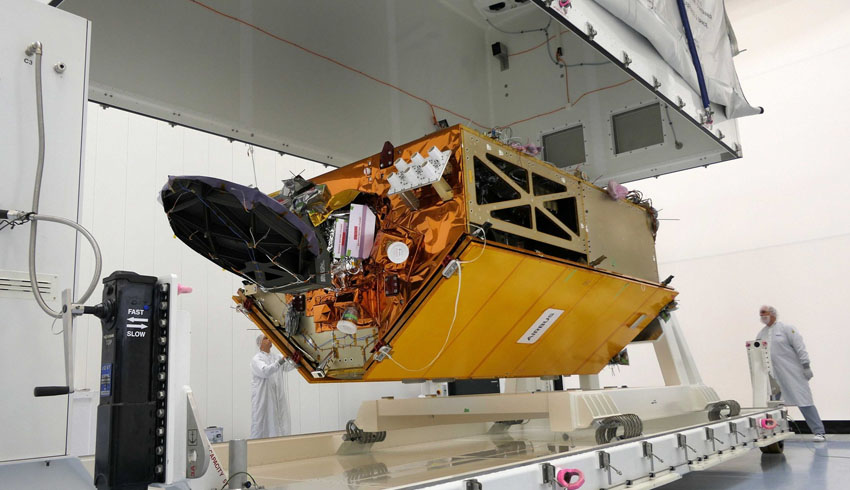With launch planned in 2027, CRISTAL will carry an advanced multi-frequency altimeter that will measure sea ice thickness and ice sheet elevations.
This data will support maritime operations in polar oceans and contribute to a better understanding of climate processes. CRISTAL will also support applications related to coastal and inland waters and the observation of ocean topography.
Six fixed and two deployable solar arrays – 18.6 square metres in total – ensure enough power on a drifting polar orbit at 760 kilometres above the Earth.
Its on-board memory will be able to store up to four terabits of science data at once, providing scientists with a wealth of information during its 7.5-year lifetime.
Jean-Marc Nasr, head of space systems at Airbus, said, “With a tenth of Earth's land surface permanently covered by ice sheets or glaciers, the cryosphere is an important regulator of global climate.”
The Airbus Defence and Space site in Friedrichshafen (Germany) will head an industrial consortium involving companies from 19 countries to deliver the project, including Thales Alenia Space to provide the IRIS Interferometric Radar Altimeter.
“Data from the Airbus-built CRISTAL predecessor, CryoSat, has shown that ice losses from Antarctica have increased global sea levels by 7.6 millimetres since 1992, with two-fifths of this rise (3.0 millimetres) coming in the last five years. CRISTAL will continue these vital measurements, a key climate change indicator,” Nasr explained.
Overall, Airbus is responsible for the spacecraft or payload on three of the six new generation Copernicus Environment and Earth observation missions: LSTM, CRISTAL and Rose-L, and is providing critical equipment to all six.
The Copernicus Sentinels are a fleet of dedicated EU-owned satellites, designed to deliver the wealth of data and imagery that are central to the European Union's Copernicus environmental program. The European Commission leads and co-ordinates this program, to improve the management of the environment, safeguarding lives every day.
The European Space Agency (ESA) is in charge of the space component, responsible for developing the family of Copernicus Sentinel satellites on behalf of the European Union and ensuring the flow of data for the Copernicus services, while the operations of the Copernicus Sentinels have been entrusted to ESA and EUMETSAT, the European Organisation for the Exploitation of Meteorological Satellites.
Six new missions have been selected to join the fleet of Copernicus Sentinels and expand the current capabilities.
Airbus is a key industrial contributor by developing and manufacturing satellites, instruments and components as well as providing related services.

